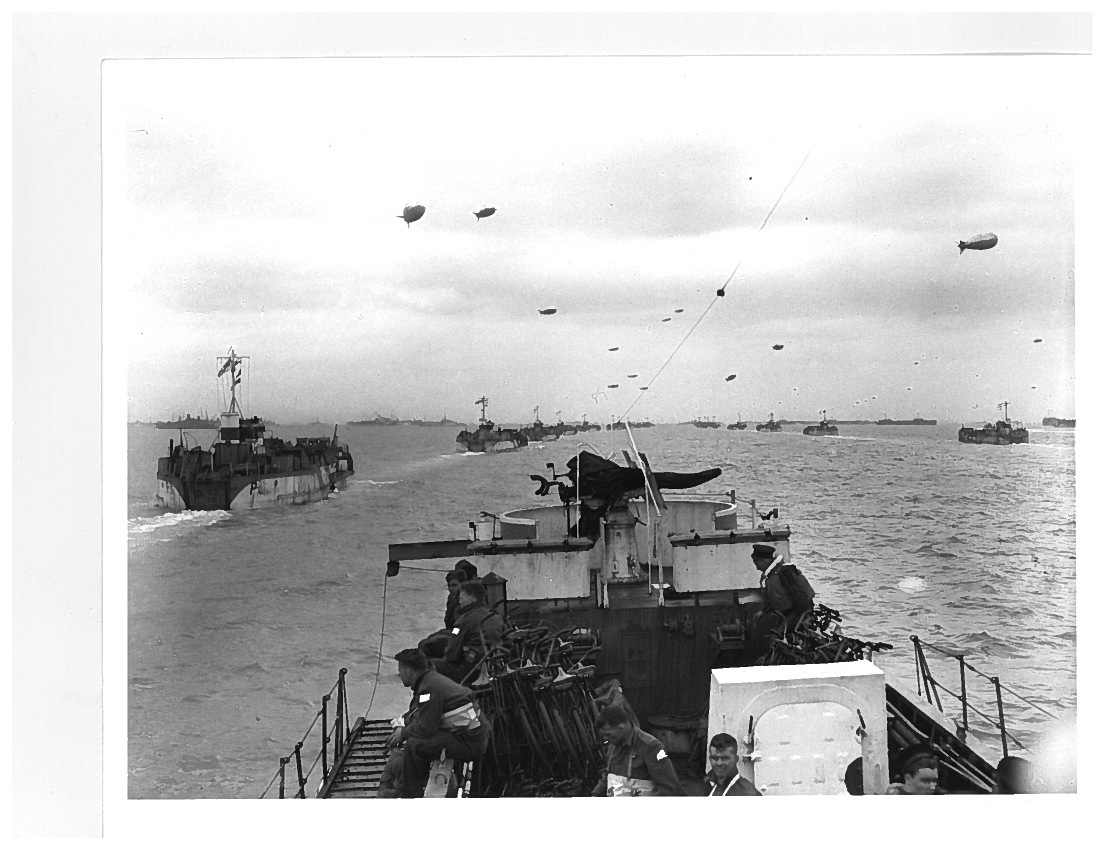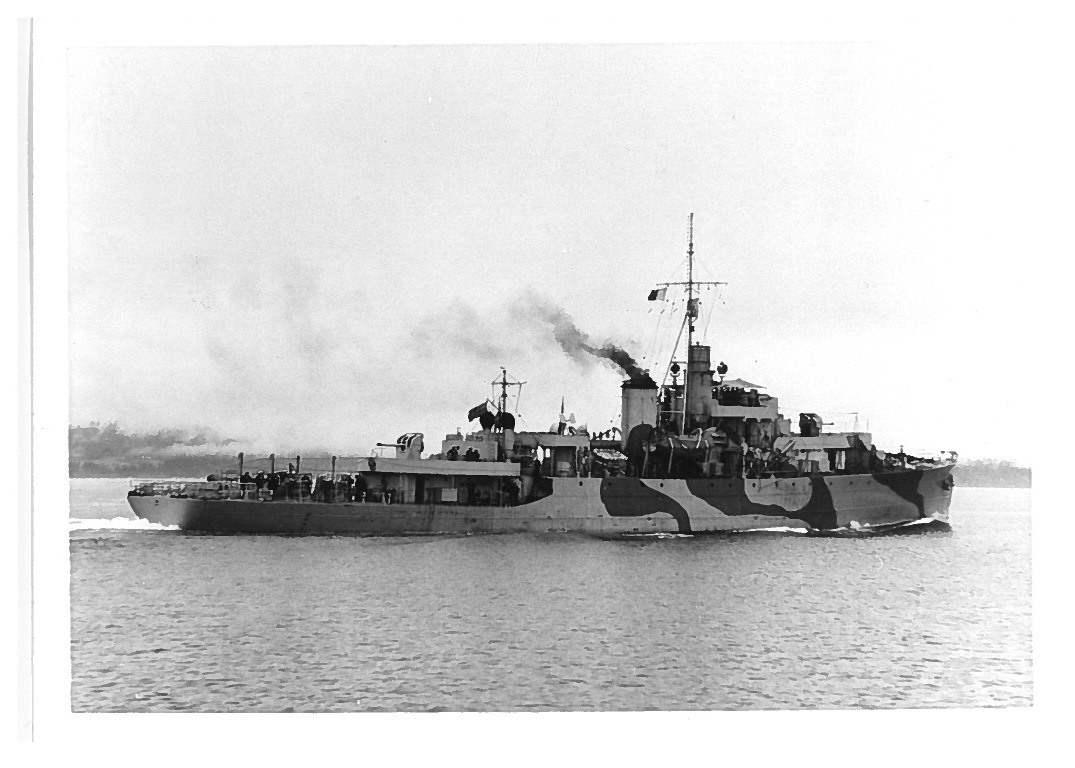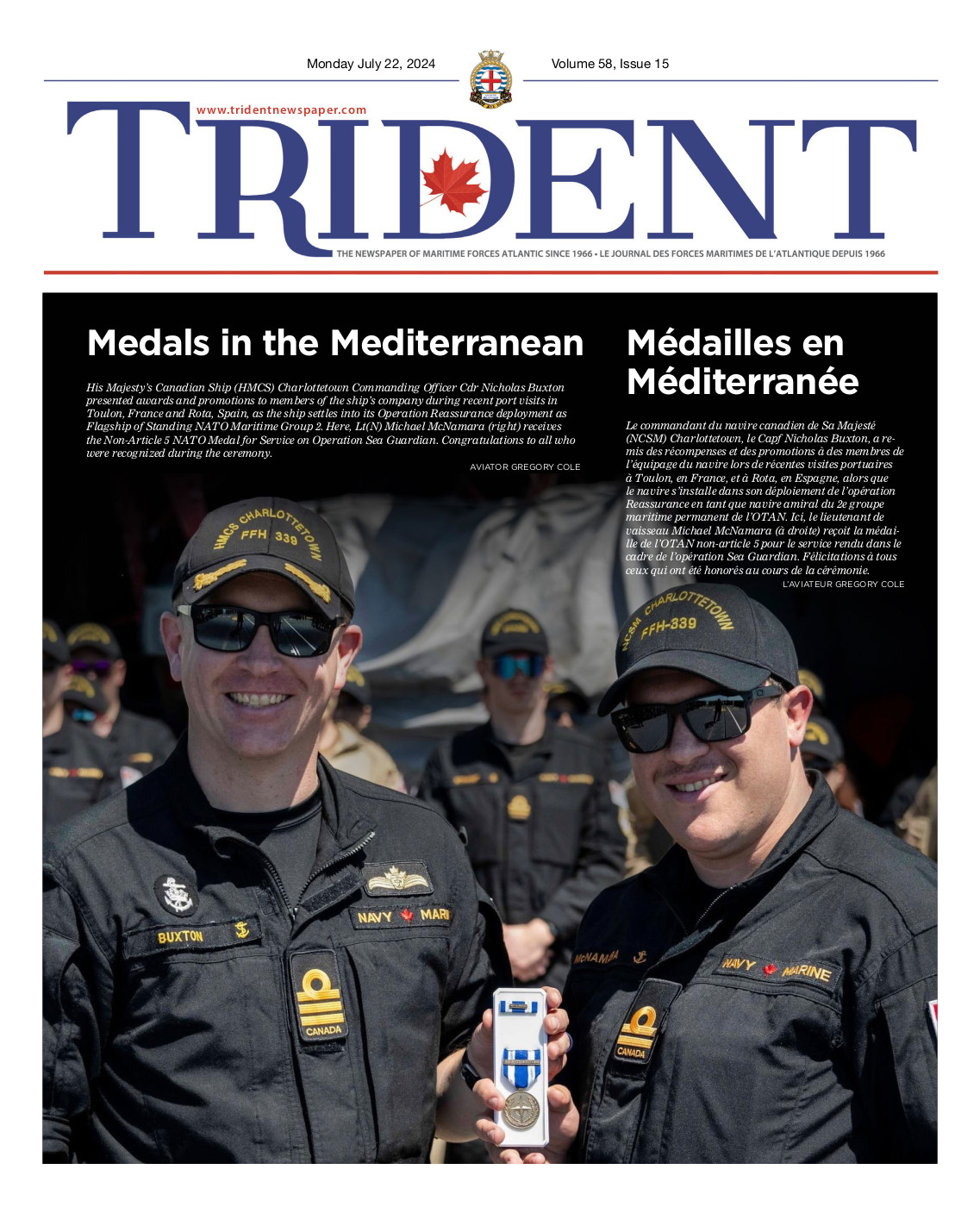
The Royal Canadian Navy and D-Day
By CPO1 (ret’d) Patrick Devenish,
Canadian Naval Memorial Trust
Soldiers, Sailors and Airmen of the Allied Expeditionary Force! You are about to embark on a great crusade, toward which we have striven these many months. The eyes of the world are upon you. The hopes and prayers of liberty loving people everywhere march with you. In company with our brave Allies and brothers in arms on other fronts, you will bring about the destruction of the German war machine, the elimination of Nazi tyranny over the oppressed peoples of Europe, and security for ourselves in a free world. Your task will not be an easy one. Your enemy is well trained, well equipped and battle hardened; he will fight savagely.

But this is the year 1944! Much has happened since the Nazi triumphs of 1940-41. The United Nations have inflicted upon the Germans great defeats, in open battle, man to man. Our air offensive has seriously reduced their strength in the air and their capacity to wage war on the ground. Our home fronts have given us an overwhelming superiority in weapons and munitions of war, and placed at our disposal great reserves of trained fighting men. The tide has turned! The free men of the world are marching together to victory!
I have full confidence in your courage, devotion to duty and skill in battle. We will accept nothing less than full victory. Good Luck! And let us beseech the blessings of Almighty God upon this great and noble undertaking.
General Dwight D. Eisenhower
In his speech to Allied Forces on the eve of D-Day, June 6, 1944, Supreme Allied Commander Europe General Dwight David Eisenhower praised those involved and hinted at the problems to be faced associated with such an undertaking. Conversely (and not widely known), he had prepared a second speech for the next day had the landings been a failure, accepting full responsibility for that failure.
Events like the landings on D-Day do not come together overnight and so it goes without saying that the story of the Royal Canadian Navy’s contributions to that endeavour commenced months before. No story of the RCN’s involvement would be complete without prefacing with the events of one night six weeks prior to the landings.
Operational TUNNEL had three goals: destroy enemy warships in the English Channel, disrupt the enemy’s coastal convoys, and map German strongpoints on the French coast in potential landing areas. As an aside, they also acted as escort for minelayers seeding coastal areas to harass any German shipping. Ships of the Royal Navy’s 10th Flotilla included HMC Ships Haida, Athabaskan and Huron as well as two Polish destroyers, several RN destroyers and the RN cruiser HMS Black Prince. To ensure the success of D-Day, the roughly 230 German surface ships as well as untold numbers of U-boats present in the English Channel needed to be neutralized in the Normandy area. In the five months spanning TUNNEL operations before and after D-Day, the 10th Flotilla alone sank 35 surface vessels and severely damaged 14 more. 10th Flotilla’s sole loss was that of the Tribal class destroyer HMCS Athabaskan along with 128 of her crew in a night action off the Brittany coast, April 29, 1944.
Just prior to the landings, 16 of the RCN’s Bangor class minesweepers as part of the RN’s 14th and the RCN’s 31st and 32nd Flotillas commenced minesweeping operations from their English and Scottish ports and in the hours leading up to the first landings, cleared lanes into several of the anchorage points for the launch of landing craft off the actual invasion beaches at Juno and Omaha.
In the week leading up to the June 5 scheduled landing date (OVERLORD was postponed 24 hours due to bad weather in the Channel), a huge Allied antisubmarine force including 11 Canadian frigates, nine destroyers and five corvettes carried out sweeps in some of the most U-boat infested waters of the Second World War. Nineteen Canadian corvettes were earmarked to escort the huge armada of ships laden with men and equipment destined for one of five landing areas; Utah, Omaha, Gold, Juno and Sword. The seaborne portion of Operation OVERLORD was known as Operation NEPTUNE and included just under 7,000 Allied vessels from Infantry Landing Craft and Motor Torpedo Boats to battleships of the Royal and United States Navies and everything in between. The number of Allied sailors involved in the NEPTUNE portion of OVERLORD actually outnumbered the number of troops put ashore on June 6. Canadian Naval Units in the Support and Assault roles included HMC Ships:
Armed Merchant Cruisers (Infantry Landing Ships)
Prince Henry
Prince David
Destroyers
Algonquin
Sioux
Haida
Huron
Athabaskan*
Assiniboine
Chaudiere
Gatineau
Kootenay
Ottawa
Qu’Appelle
Saskatchewan
Skeena*
St. Laurent
Restigouche
Minesweepers
Caraquet
Canso
Bayfield
Blairmore
Cowichan
Fort William
Georgian
Guysborough*
Kenora
Malpeque
Milltown
Minas
Mulgrave
Thunder
Vegraville
Wasaga
Frigates
Cape Breton
Grou
Matane
New Waterford
Outremont
Meon
Port Colbourne
Stormont
St. John
Swansea
Teme*
Waskesiu
Corvettes
Alberni*
Baddeck
Calgary
Camrose
Drumheller
Kitchener
Lindsay
Lunenburg
Mayflower
Mimico
Moosejaw
Rimouski
Port Arthur
Prestcott
Regina*
Summerside
Trentonian*
Woodstock
Other:
29th Motor Torpedo Boat Flotilla*
65th Motor Torpedo Boat Flotilla
528th Landing Craft Assault Flotilla (HMCS Prince Henry)
529th Landing Craft Assault Flotilla (HMCS Prince David)
1st Canadian Landing Craft Infantry Flotilla (ex-RN 260th)
2nd Canadian Landing Craft Infantry Flotilla (ex-RN 262nd)
3rd Canadian Landing Craft Infantry Flotilla (ex-RN 264th)
* Vessels lost either as part of NEPTUNE or in the months following.
On that first day, an Allied Fleet unprecedented in size prior to and since, landed over 90,000 troops, 10,000 vehicles and artillery pieces and over 5,000 tons of food and ammunition. The roughly 10,000 RCN and Canadian Merchant sailors can be justifiably proud of their part in OVERLORD: the beginning of the end for Hitler’s Third Reich.





